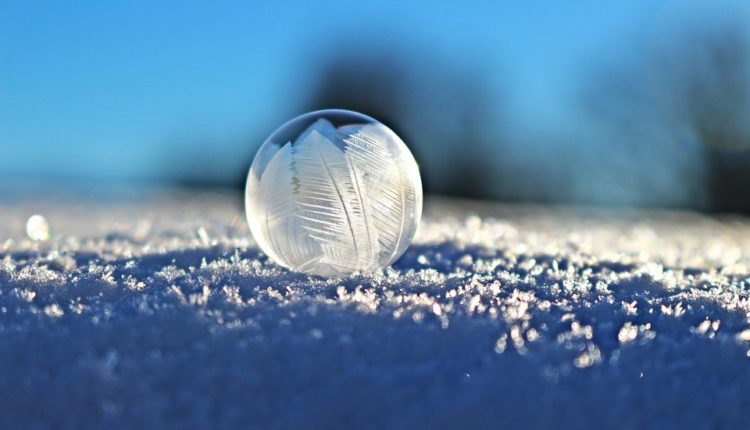While it may seem like there is no end to this frigid and messy winter, there’s no reason to attempt hibernation and ignore the fun and exciting experiments you and your child can perform outside.
STEM stands for Science, Technology, Engineering and Mathematics and the best thing about STEM activities is that they often require no special equipment or materials. They are fascinating and beneficial to your child’s academic development.
Take advantage of the sub-zero temperatures and check out these cool (no pun intended) cold weather science experiments:
(I lied. The pun was intended.)
Frozen Bubbles
As soon as the temperatures begin to plummet, you may find yourself forlornly packing up and putting away summer items such as beach towels, soccer balls and bubble mixture. While you may not have much use for beach balls and sunscreen during the cold winter months, you may want to reconsider shelfing those bubbles.
Once the mercury hits below zero, you can have some fun with those bubbles outside. Find an area sheltered from the wind and let loose some bubbles high in the air. Watch as they freeze and even crystallize.
The Science Behind It: Soap bubbles form when a layer of water molecules gets stuck between two layers of soap molecules. When it’s cold outside, the water freezes before the bubble pops, creating a longer lasting bubble.
Questions to Ask Your Kids:
- Did these bubbles float different than bubbles blown inside?
- Did the bubbles pop or deflate?
- What kinds of patterns appeared on the bubble?

Shrinking Balloon
Another fun experiment to try out in the cold is to take an inflated and tied balloon out into frigid temperatures. Watch as it seems to completely deflate before your eyes! Now bring it back inside and watch as it magically fills back up with air. What?
The Science Behind It: Air contracts when cold, meaning the volume of the air shrinks and its density increases and makes the balloon smaller and appear deflated. Once the air warms up, it expands and its density increases, making the balloon inflate again.
Questions to Ask Your Kids:
- Where do you think the air went?
- How come the balloon appears wrinkly?
- Where does the air come from when you take it inside?
Light Some Snow on Fire
This is definitely an experiment that requires adult supervision and should be performed out of doors. Trying to melt snow with a lighter seems like a straight forward way to turn Frosty into a puddle but why, do tell, does it sometimes seem to burn instead of melt?
Give it a try! Grab some snow, a lighter and a responsible adult and light it up!
The Science Behind It: When snow is lit with a lighter it sometimes burns, turns black and gives off a weird smell. This occurrence has actually led to a paranoid belief that snow is fake and poisonous – what’s actually happening is the heat from the lighter is melting the snow but the lighter itself is causing the black soot and smell. I know it’s not exactly exciting science, but it can definitely raise some interesting questions:
Questions to Ask Your Kids:
- If snow is wet and cold, why does it look like it’s burning?
- Why is lighting the snow with a lighter create a different effect than heating snow in a pot on the stove?
- What can you add to the snow to make it catch fire? (Please keep this one hypothetical! No dousing snow in gasoline in the name of science.)

